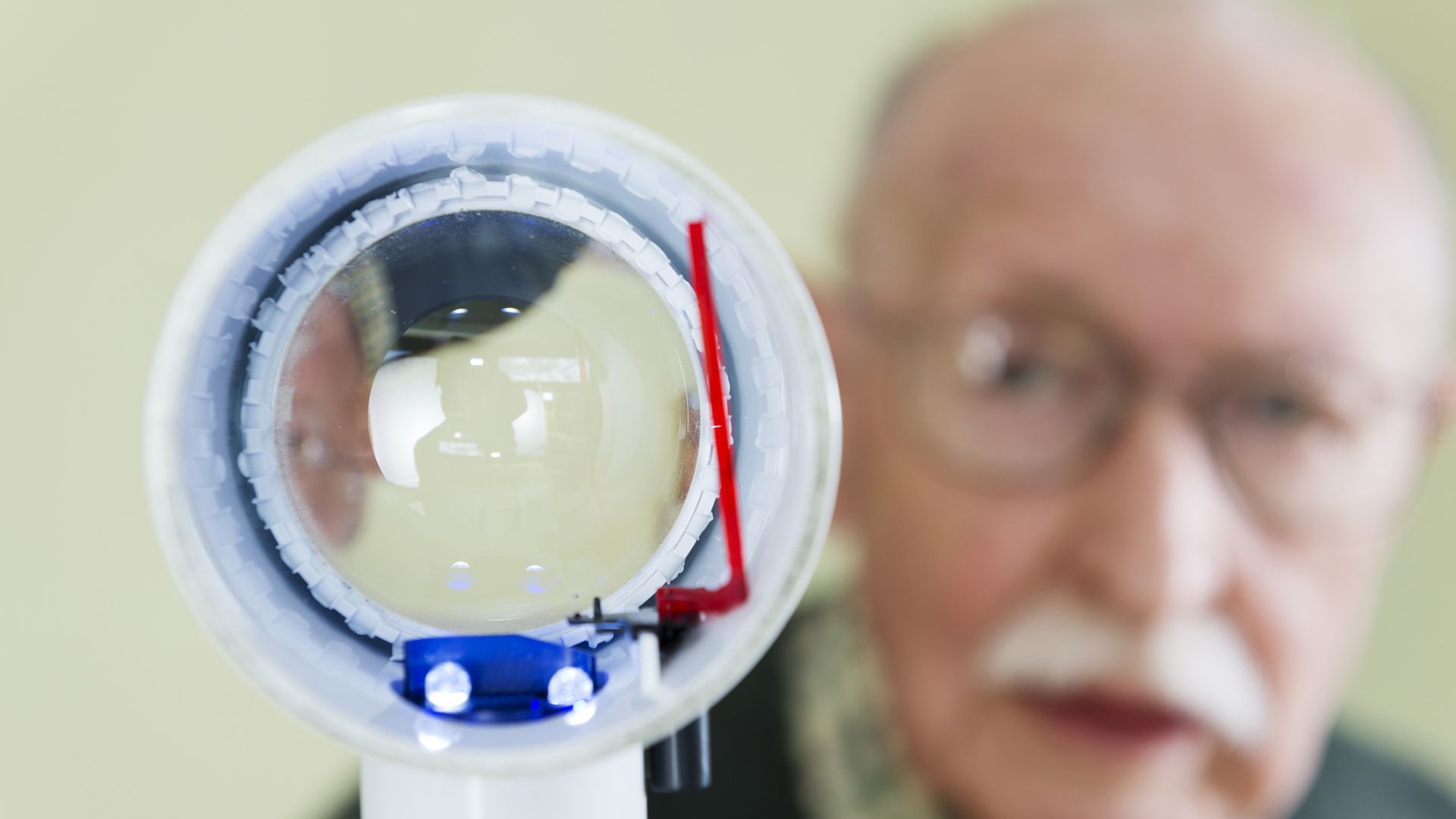Wet age-related macular degeneration (wet AMD) is the less common of the two types of AMD, but can progress quickly and can result in severe vision loss. The good news is that there are treatment options available. The preferred treatment is anti-vascular endothelial growth factor therapy, or anti-VEGF therapy.
Below is an overview of how anti-VEGF therapy works, how it is administered, and why it is the preferred treatment for wet AMD.
How anti-VEGF therapy works
There are two types of AMD. Dry AMD occurs when the light-sensitive cells of the retina and macula (located at the back of the eye) degrade and become damaged. While the cause of this is unclear, it is associated with deposits of waste materials—called drusen. These accumulate on the retina and supporting tissues as a person ages.
Wet AMD occurs when abnormal blood vessels form beneath the retina in response to this damage. These abnormal blood vessels can leak blood and fluid into the eye. This can damage the retina, cause scarring, and result in severe vision loss.
Medically reviewed in October 2019.
In order to grow new blood vessels, the body requires something called vascular endothelial growth factor (VEGF). This is a protein that is made by the body. When cells produce too much VEGF, abnormal blood vessels can form. As you may have inferred from the name, anti-VEGF therapies block VEGF. This slows the damage caused by the abnormal, leaky blood vessels.
How anti-VEGF therapy is administered
Anti-VEGF therapy is injected into the eye with a very thin needle. While the idea of getting an injection in the eye can be intimidating, first-time patients should know that it is not painful (patients describe feeling pressure on the eyeball), it only takes a few seconds, and you will typically not be able to see the needle during the injection.
Here’s a basic overview of the in-office procedure when receiving anti-VEGF therapy:
- Your eye will be cleaned with a wash. This will help prevent infection.
- A numbing agent will be applied to the eye to minimize discomfort and pain.
- Your ophthalmologist may use a clip to hold you eyelid open.
- The injection site will be marked, and the injection will be administered. Anti-VEGF injections are given in the white of the eye.
- After the injection, your healthcare provider will assess your vision and wash the eye with sterile water.
- The appointment typically takes ten to fifteen minutes, but the injection itself takes only seconds.
The schedule of treatments will vary from person to person, and will depend on the specific anti-VEGF drug being used. Determining a treatment schedule and what drug to use are decisions you will make with your healthcare provider.
Why anti-VEGF is the preferred treatment
There are two other treatments that are sometimes used for wet AMD—photodynamic light therapy and laser surgery—but these are not as effective as anti-VEGF therapy, and come with a higher risk of side effects. The majority of people with wet AMD who are treated with anti-VEGF therapy see their vision stabilize, and a number see their vision improve.





